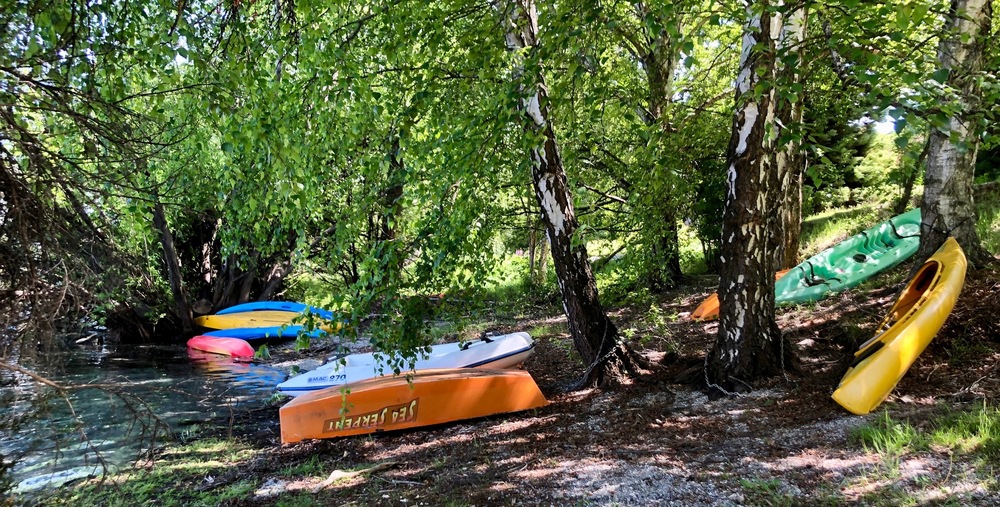Boat owners’ responsibilities around the lake
Diana Cocks
08 November 2020, 5:04 PM
 Seasonal spring conditions mean Lake Wānaka’s water levels are quite high.
Seasonal spring conditions mean Lake Wānaka’s water levels are quite high.The seasonal combination of snow melt and spring rain has raised lake levels considerably and many private canoes, kayaks and runabouts left on Lake Wānaka’s foreshore are very close to the water’s edge.
Dozens of vessels are stored all year round under Roys Bay foreshore trees, particularly from the Marina to Eely Point, and most of the time they are well above the water level.
But current spring conditions and high lake levels could sweep these vessels into the lake where they have the potential to become an unexpected floating or submerged hazard to lake users.
Queenstown Lakes District Council’s (QLDC) harbourmaster Marty Black said he was not aware of any recent complaints from lake users having to avoid a collision with drifting vessels and, even with high lake conditions, very few drift into the lake. But, he said, it is the responsibility of individual owners to look after their boats.
“Of course, it would be ideal if owners kept their boats back from the water’s edge in a safe position,” he said.
Check, Clean, Dry campaign
The council is also supporting the Otago Regional Council’s (ORC) message aimed at boat owners to help stop the spread of pest weeds.
The ORC will run its “Check, Clean, Dry” campaign again this summer and QLDC media spokesperson Jack Barlow said council “fully supports this message throughout the Queenstown Lakes District”.

Vessels stored along the Roys Bay foreshore have the potential to create a water hazard while the lake is high.
The campaign highlights three essential steps to stop the spread of invasive aquatic pests, such as lagarosiphon and didymo, by asking owners to check, clean and dry their boats, jet skis, and other vessels and equipment before travelling to another waterway.
The national campaign, led by the Ministry for Primary Industries, asks people to check all gear, including fishing gear, for any plant material and remove it before relocating.
ORC environmental officer Mandy Dalziel said an ORC team surveyed 630 people in Otago last summer on their knowledge of freshwater pests and their actions to stop the spread.
While the survey showed that the majority of respondents could identify a freshwater pest such as didymo, lagarosiphon or lake snow, and always followed the Check, Clean, Dry protocols, Mandy said, there were some respondents who said they never followed protocols because aquatic weeds like didymo are already present in waterways.
“This is a really worrying perception, and we’ll be working to spread awareness of the wide range of aquatic pests that can threaten Otago’s waterways,” she said.
More information on aquatic pests and the Check, Clean, Dry campaign can be found on ORC’s Pest Hub here.
PHOTOS: Wanaka App





